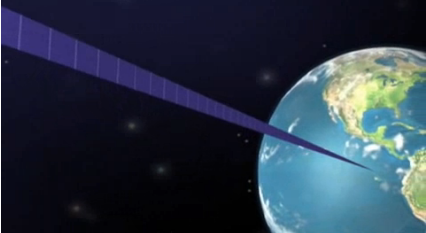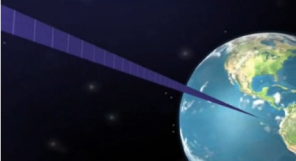You might think the hard part in inventing a space elevator would be the motor, but in practice the sticking point has turned out to be the cable. At the 2012 Space Elevator Conference held at Seattle’s Museum of Flight, the Strong Tether Competition was postponed. The organizers say they weren’t able to give participants enough time to prepare for the conference, but that there will be a 2013 Strong Tether Challenge.
NASA has been offering a $2-million prize to the person who can “exceed the strength of the best available commercial tether by 50 percent with no increase in mass,” but as of 2011, the competition had gone five years without a winner, despite incremental advances being made.
In 2009, I spoke with LaserMotive’s Jordin Kare about their laser-powered climber’s world-record pace, which netted his team a $900,000 prize, but the climber challenge had ended up using a 4300-foot, 3/16-inch steel cable, held aloft by a helicopter. It was emblematic of the gap in development.
Despite all of the hype about the tensile strength of carbon nanotubes, CNTs have remained frustratingly resistant to being woven together in strength at length, which is what needs to happen if the space elevator is to travel non-nano distances. (It’s enough to make people turn to boron nitride nanotubes.)
On the other hand, Space Elevator Blog has a picture of a cassette-tape-style CNT braid that shows you it can be done. If you think about the whole history of rocket flight, this kind of year-over-year progress is staggering. It helps to keep perspective: Yes, the space elevator would need to climb more than 62,000 miles of “cable” to climb, but as David Horn, of the International Space Elevator Consortium (ISEC), reminds you, there are 80,000 miles of cable in the Golden Gate Bridge.
In July, Horn explained the concept of the elevator program, and its development to Forbes, predicting ocean-based elevators (they need to be able to move to avoid objects in orbit) that can carry 20 tons.
As the BBC’s Richard Hollingham mentions, the only thing crazier than a space elevator is the idea of using hugely expensive rockets instead. Modern-day rocket launches, when they work, run about $16,700 per kilogram. “Estimates suggest that the cost of sending cargo into space,” writes Hollingham, “could plummet to around $100 per kilogram” with a space elevator.
At this year’s conference, part of the buzz was around a Kickstarter-powered lunar elevator from LiftPort. The idea is to leapfrog to the easy part: A lunar-based elevator doesn’t have to climb out of Earth’s gravity well, so the cable it climbs can be constructed from “off-the-shelf” materials available right now. Rockets would still be need to get materials into space, but you could build a lunar base without the hassle of landing. And lunar bases are, let’s face it, very cool.
The initial Kickstarter goal was $8,000, but it had raised $62,000 by the time of this Scientific American article. (It’s at $67,000 with six days to go.)
LiftPort’s Michael Laine, profiled by Seattle Metropolitan here (one thing space elevators are not short on is publicity), admits that millions–not thousands–of dollars are what he needs to raise to really get the Lunar Space Elevator climbing, but he notes that the test the Kickstarter program funds (a 1.2-mile vertical climb up a cable held aloft by balloons) has Earth-based applications.
Radio frequency communications are all based on ‘line-of-sight’. Which means the farther you can see, the farther you can communicate (within the limits of sending and receiving power). That is why cell towers and TV broadcast towers are constructed on hills, mountains and tall buildings. Every vertical foot matters. The system we’ve designed can be used for communications in remote villages, to monitor crops for efficient harvesting, early warning for forest fires, perimeter security or to provide wireless internet to a campus.







